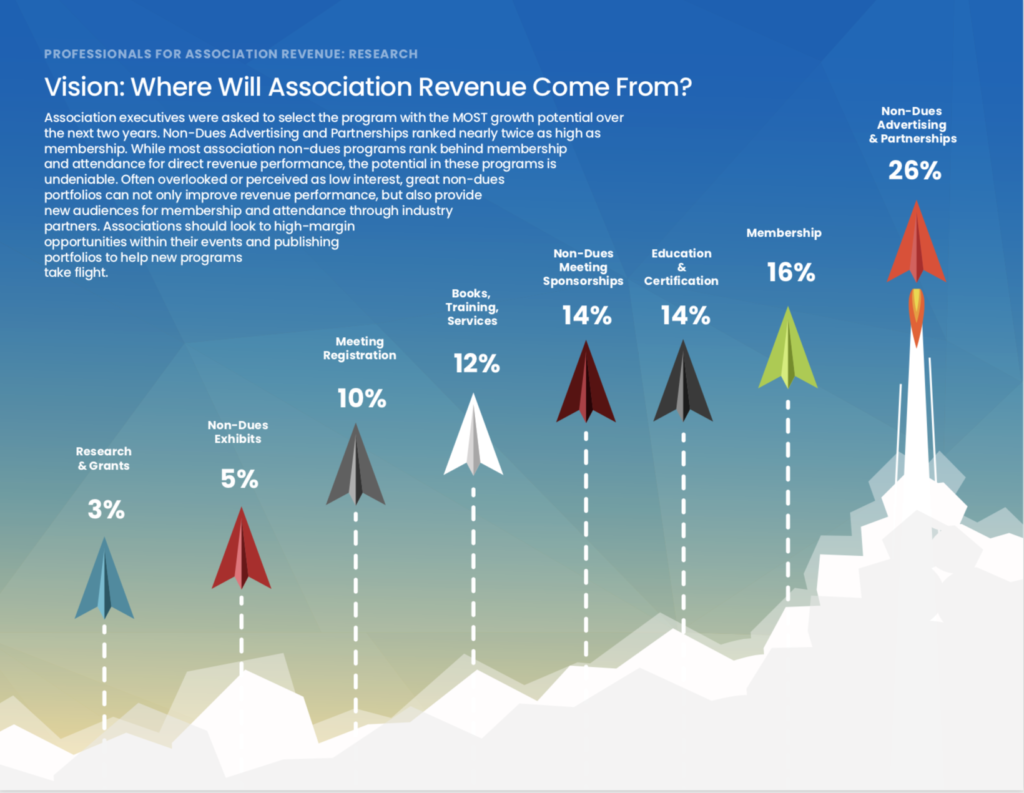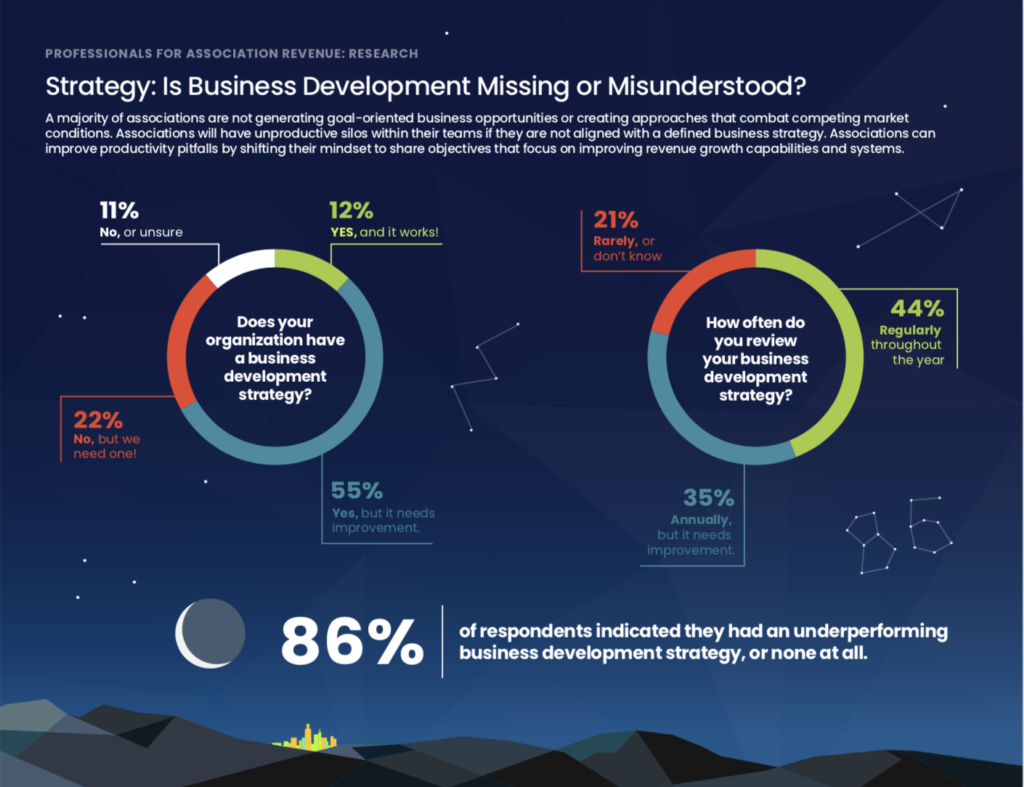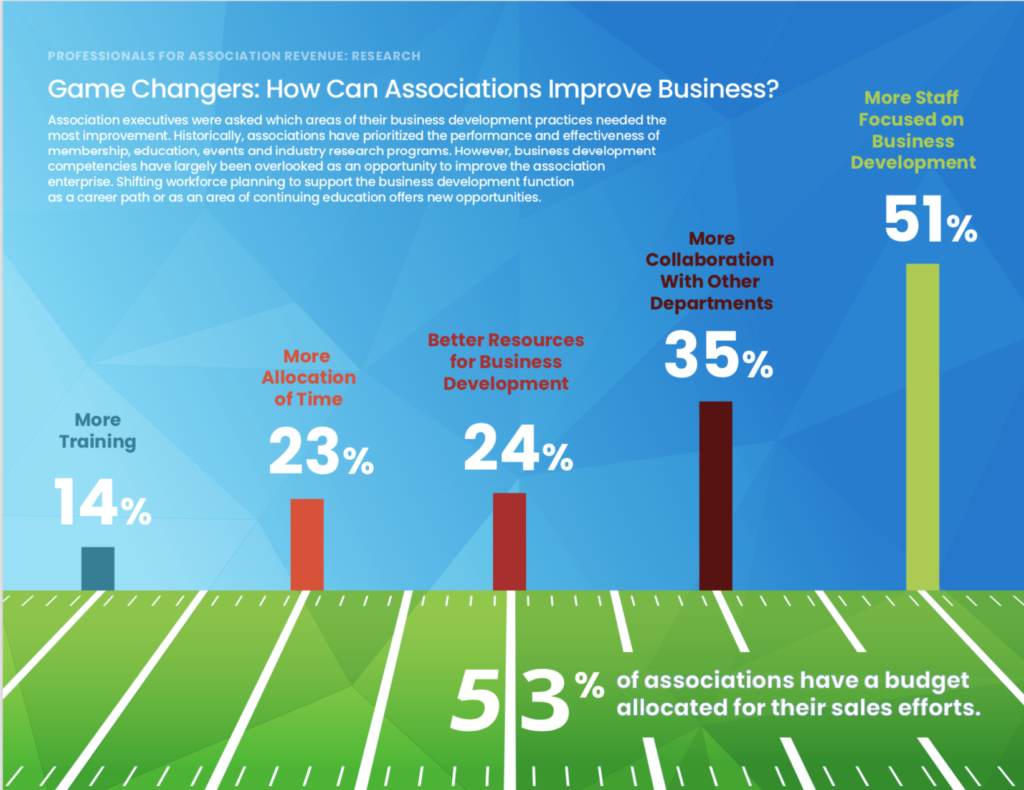The association media world was asked in a new survey to name the program with the most revenue growth potential during the next two years, and if you’re thinking that it must be event-related, or membership development, or even education and certification, here’s a surprise: It’s actually non-dues related advertising and partnership initiatives.

Association media professionals see a big opportunity in advertising.
More than a quarter (26%) of the respondents in the survey, conducted over the last 18 months among 100 association executives, said their growth potential comes from advertising and partnerships associated with both publishing and events. The research was conducted by the two-year-old startup organization Professionals For Association Revenue, whose mission is to inspire revenue growth for association professionals.
The PAR survey is part of an effort to establish empirical data around the association business-development landscape.
Towson, Maryland-based PAR, which has150 member associations, invites every association looking to improve revenue health to join and participate.
Respondents came from a range of organizations, with 7% of respondents over $50 million in revenue, 32% from $10 million to $49 million, and 51% under $10 million. Respondents came from all corners of the enterprise, including executive management, director-level staff, and sales teams, as well as support staff.
The growth potential around advertising and partnerships is, according to the survey, nearly double from membership development (16%), according to the survey, with education and certification programs (14%), non-dues event sponsorships (14%), books and training services (12%), event registration (10%), exhibit sales (5%), and research (3%) all trailing the advertising and partnerships opportunity.
“Each association will be different based on size and approach,” says Sean Soth, PAR founder and Leadership Advisory Board chairman. “How and why we approach these opportunities will inform their success.” These programs, he says:
- Must provide value for the audiences they serve.
- Need support from all departments to ensure alignment and success.
- And require professional business leads who understand the changing landscape of business development and can guide advertisers or partners to the best decisions.
The bullish outlook about advertising growth is partly because such initiatives trail other revenue sources by a significant margin in terms of the actual priorities for strategic managers and revenue producers within associations, according to the research. Asked to name their association revenue-development priorities, respondents overwhelmingly cited membership, which was top-of-mind for 87% of the executives who filled out the survey.

Sean Soth.
Membership was then followed by event-registration revenue as a priority, with 67% of respondents saying that was a high priority. It was followed by non-dues exhibit sponsorships (46%), non-dues meeting sponsorships (44%), education and certification programs (32%) and only then with non-dues advertising at 26% of respondents.
Clearly, advertising and partnerships remain a lower priority. There may be a variety of explanations. “Advertising can be a low-interest activity for the c-suite,” Soth says. “But the publishing and media teams can be a driving force in growing the organization.
Another reason is the sometimes-siloed nature of association divisions. “They can be independent and don’t communicate,” Soth adds. “We need to help leadership understand the long-term potential.”
But overall, the research seems to tell a tale of poor coordination and missed opportunities in association revenue-generation. For example, a striking 87% of the respondents said they either don’t have a goal-oriented business-development strategy, or don’t know if they do, or that it doesn’t perform well. “We don’t approach the topic of revenue the same as we do dues,” Soth says. “The question becomes how do we approach revenue as a team sport affecting all sources the same: Dues, sales, sponsorships.”
More than half of respondents (56%) said they only review the organization’s performance against the bus-dev plan annually, or rarely, or they don’t know. “Associations will have unproductive silos within their teams if they are not aligned with the defined business strategy,” the report states.
“Competency in forecasting needs to be a approached differently from maybe what’s been done traditionally,” Soth says. “There should be new data points and action items. It should be done more holistically.”

Business development strategy is often a hit-or-miss proposition in associations.
If that lax approach to planning is the vast majority of respondent associations, it’s not a surprise either that fewer than 50% of all respondents believe they’ll hit their budget targets—and that applies even to the highest-priority revenue sources, including membership (48% expect to hit budget, event sponsorships (48%), and attendee registration (41%).
Lower-priority revenue-development sources, like products and books, education, and advertising, fare much worse.
So what’s in the way of this dismal revenue-related performance? It runs the gamut. Lack of staffing and resources was cited most, named by 33% of respondents. This was followed by the lack of a business-development stratergy (22%), not enough dedicated sales time (19%), market conditions (14%), and unreasonable targets (5%). Below these were the need for more training, and what might be the worst excuse of all, the lack of relevancy of the organization’s products.
The converse of these impediments—that is, what is necessary for associations to improve their business-development efforts? Respondents in the PAR survey cited increased collaboration, better resources, more time and more training.

Survey respondents offered a variety of ways to improve business development.
The PAR survey is filled with actionable data beyond what’s in this article. To download the full report, click here.
